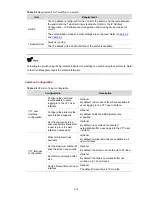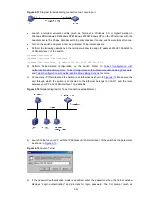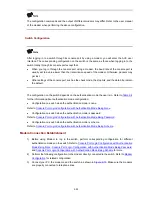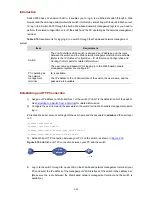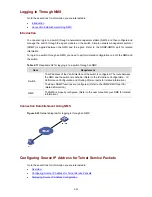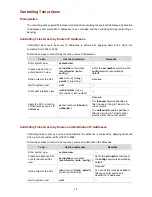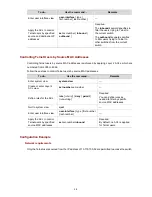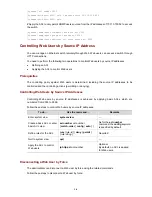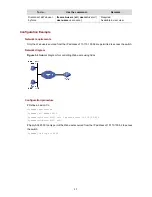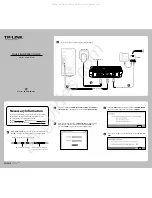
The configuration commands and the output of different modems may differ. Refer to the user manual
of the modem when performing the above configuration.
Switch Configuration
After logging in to a switch through its console port by using a modem, you will enter the AUX user
interface. The corresponding configuration on the switch is the same as those when logging in to the
switch locally through its console port except that:
z
When you log in through the console port using a modem, the baud rate of the console port is
usually set to a value lower than the transmission speed of the modem. Otherwise, packets may
get lost.
z
Other settings of the console port, such as the check mode, the stop bits, and the data bits, remain
the default.
The configuration on the switch depends on the authentication mode the user is in. Refer to
Table 2-4
for the information about authentication mode configuration.
z
Configuration on switch when the authentication mode is none
Refer to
Console Port Login Configuration with Authentication Mode Being None
.
z
Configuration on switch when the authentication mode is password
Refer to
Console Port Login Configuration with Authentication Mode Being Password
.
z
Configuration on switch when the authentication mode is scheme
Refer to
Console Port Login Configuration with Authentication Mode Being Scheme
.
Modem Connection Establishment
1) Before using Modem to log in the switch, perform corresponding configuration for different
authentication modes on the switch. Refer to
Console Port Login Configuration with Authentication
Mode Being None
,
Console Port Login Configuration with Authentication Mode Being Password
,
and
Console Port Login Configuration with Authentication Mode Being Scheme
for more.
2) Perform the following configuration to the modem directly connected to the switch. Refer to
Modem
Configuration
for related configuration.
Figure 2-15
3) Connect your PC, the modems, and the switch, as shown in
. Make sure the modems
are properly connected to telephone lines.
2-29


